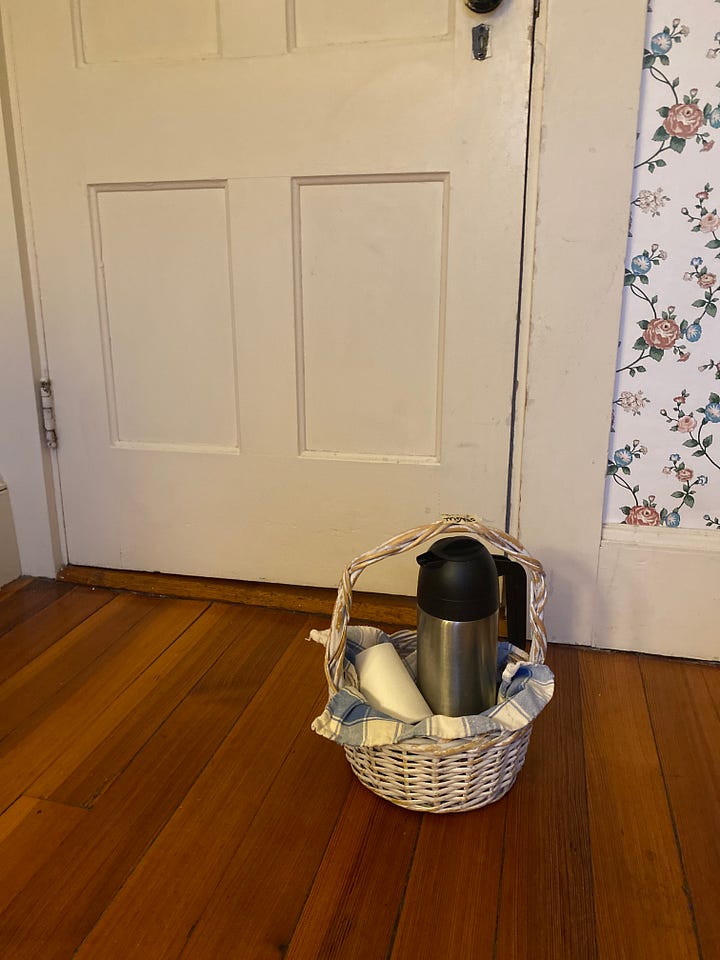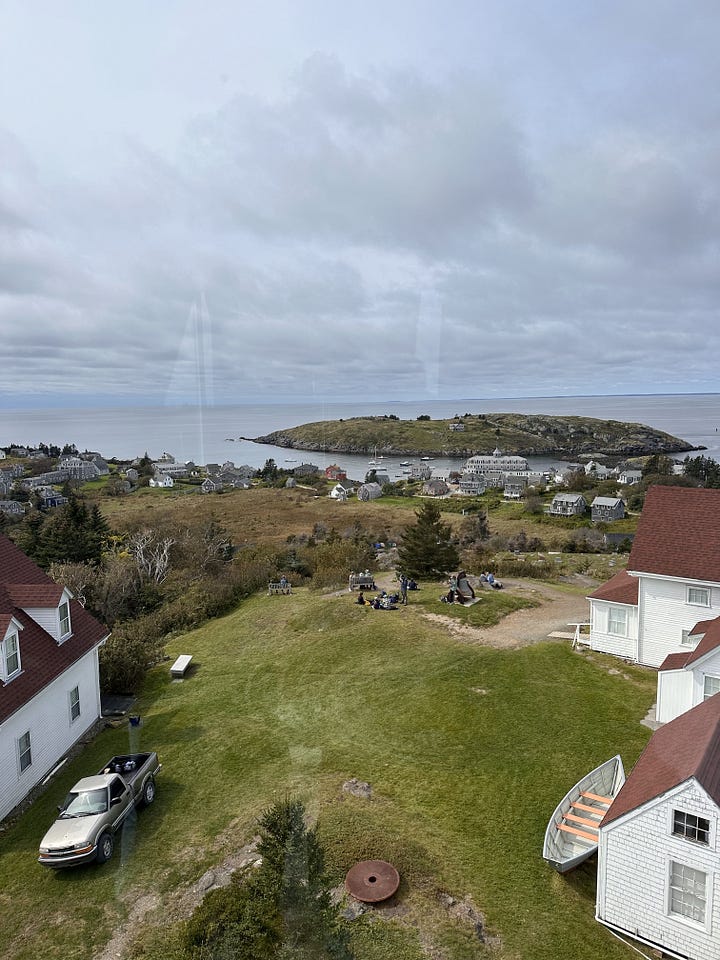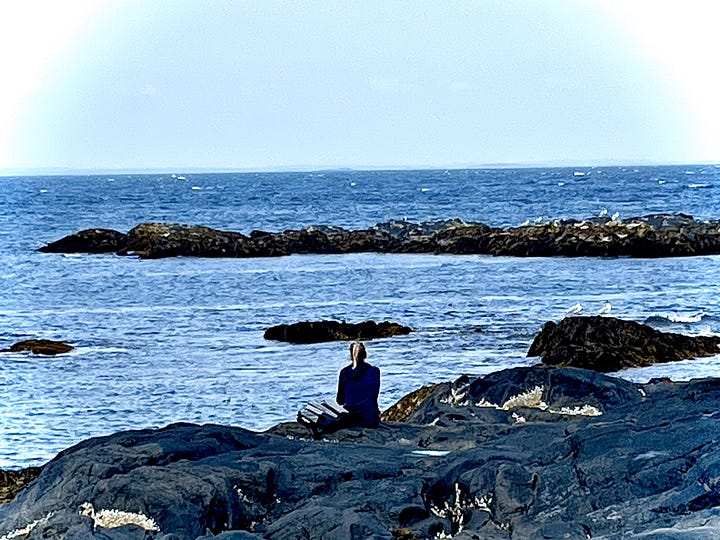Fish Tales
...and a pair of fin-tastic haddock recipes
From Karyl’s Cook & Tell Column (April 2, 1981)
The whole history of my fishing career begins and ends one summer day in New Bedford, Massachusetts. I am 10 years old, lying on my stomach on the New Bedford Yacht Club float beside a pal named Betty Jo Graham. We are armed with tea strainers—the small size, about 3” in diameter—and we are catching jellyfish off the float in our strainers.
Stricken with remorse after amassing an impressive pile of the strange, transparent creatures, we scrape the entire shapeless blob off the float and back into the brine. We are too young to realize we have probably snuffed out their lives by this merciless exposure to air anyway.
I’m not sure this qualifies as a real adventure in fishing, but it’s the only one I’ve got. Thank goodness for the stalwart seafarers who have better things than tea strainers to bag their quarry with, and for the trade they and their ancestors have carried on longer than any other in our state’s salty history. Let’s hear it for Maine’s oldest industry, fishing!
The ubiquitous Capt. John Smith, whose maritime pursuits took him from England to just about everywhere on the east coast of the North American continent, fished the waters around Monhegan Island and the Bristol peninsula in the seventeenth century and found the same amazing variety and abundance of finny specimens the Native population had long since made mainstays of their diets.
Much later in Boothbay, a specialized industry based on one species would develop, that would bring prosperity to its townsfolk for an all-too-brief period. Menhaden, or pogies, were the fish of the hour, arriving in such quantities in the 1860’s and 70’s as to cause the almost instant bloom of factories for rendering them into fertilizer and for extracting their oil. While the pogies remained, factory owners prospered and workers made a decent living. Factory Cove, near Spruce Point, is named for the business that flourished there in the mid-to late-1800’s. When the pogies unceremoniously departed Boothbay waters, factory owners were stunned and never quite recovered. A whole industry was gone.
Our fishermen, lobstermen and clam diggers have obliged us with the fruits of their toil for many generations. We could happily rely on fish for our protein and never run out of inspiration in the preparation. Brown rice cooked in clam broth in a cast iron skillet with sole filets laid on top to steam for the last few minutes is a simple, so-good way with fish. Chowder is the “basic black dress” of many a weekly menu; adding shrimp and a few scallops lifts it to new gastronomic heights. Crabmeat in quiche or patties is rarely greeted with complaints. Arrange a tin of good old sardines and a quartered hard-boiled egg with thin-sliced red onions in a radiating pattern on top of a little salad made with one potato, cubed and dressed with vinegar and oil, for a lovely supper for one.
Karyl’s Headnotes
Alas, I have no sensational jellyfish recipe to close with, but I do have Aunt Evelyn, a straightforward Yankee cook, whose galley faces picturesque Back Cove in New Harbor. When I asked her how she cooks haddock, Aunt got her recipe notebook off the shelf and went right for the casserole section. She found a recipe, announced with the authority of experience, “This is how I make it,” and handed me a pencil and recipe card.
AUNT’S HADDOCK CASSEROLE
1 lb. haddock
A few squeezes of lemon juice
2 T. flour
2 T. butter
1 c. fish broth
½ t. salt
½ t. pepper
1 t. Worcestershire sauce
1/3 c. water
1/3 c. evaporated milk
3 potatoes, peeled, sliced and parboiled
Buttered breadcrumbs for topping
Cook fish in salted water with a little lemon juice. Layer in casserole dish with sliced, parboiled potatoes. Make the sauce: melt butter, add flour and stir briefly. Whisk in fish broth and seasoning, then water and milk. Pour over fish. Top casserole with buttered breadcrumbs. Bake at 375◦ F for 30 mins.
Amie’s Endnotes
If you’re as big a haddock fan as I am, you’ll enjoy the bonus recipe (below). Sprung from the pages of an old Maine community cookbook and onto the plates of the eight of us attending sarah e webb ‘s annual retreat on Monhegan last fall, it’s a dish as memorable as the gathering: five days filled with art galleries and lighthouses, hikes along the island’s rocky cliffs, yoga, writing and sketching. Sarah’s 2024 Retreat is already sold out, but her newsletter is definitely worth a look.




In next month’s issue: something Swedish (hint: it’s not fish)…



Love how your mom describes chowder as the "basic black dress".
Oh, Annie, I loved this! And not just because it brought me back to my own childhood growing up in New England (Vermont). I visited Maine often (Boothbay Harbor among other places) and still have family there (Jonesboro). It's a beautiful state! And your story was delightful--can't wait to make the Haddock Casserole. "Chowder is the basic black dress..." ❤️ Cheers. ~cjp